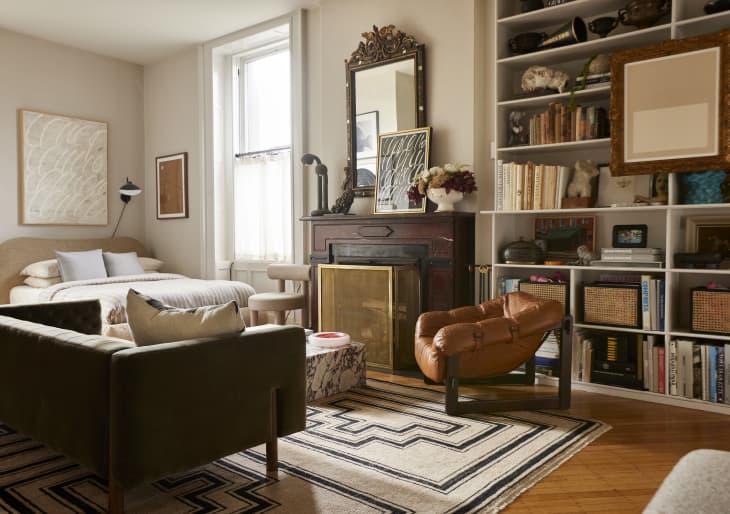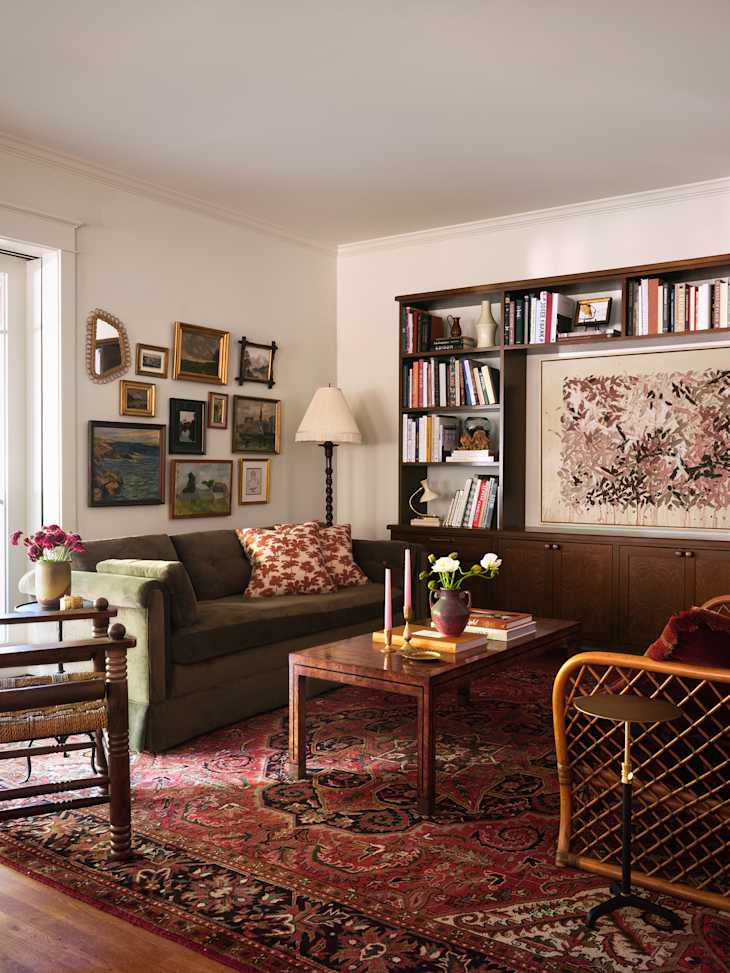

Ever sit down in a living room where one person’s sunk deep into the sofa and another’s practically perched on a throne-like armchair? It’s weirdly uncomfortable — not just for sitting but for the whole vibe of the room. The conversation feels off, the energy dips, and something about the setup just doesn’t click. Designers have a simple fix for that awkward imbalance, though: the “4-Inch” Rule.

What Is the “4-Inch” Rule?
This design idea will be easy enough to remember: Keep your seat heights within about 4 inches of each other. The seats of sofas, armchairs, dining chairs, even banquettes should all land in roughly the same 4-inch range. The consistency of your seats’ heights keeps a space visually harmonious and physically comfortable for interacting with the other people in it.
“When your seating heights are wildly uneven, it feels like the furniture is arguing,” says designer and stager Jason Saft of Staged to Sell Home, one of my very favorite interior design pros who used this rule in his own Brooklyn Heights apartment. “A sofa at 18 inches next to a lounge chair at 13 looks like one of them gave up halfway through the conversation. But within that 4-inch window, everything starts to hum together — the eye relaxes, and the room feels composed without you quite knowing why.”
Saft admits he doesn’t treat this rule like gospel. “Think of it less like a law and more like social etiquette for furniture,” he says. “You want everyone sitting at roughly the same level so the conversation and the view line feels balanced.”
Designer Joe Waroquier agrees. “When seating heights are wildly different, the room can feel disjointed and conversation awkward. Keeping pieces within a similar range naturally creates flow and visual steadiness.”

How to Apply the “4-Inch” Rule in Every Room of a Home
The “4-Inch” Rule travels well. In living rooms, it’s what separates a collected look from a chaotic one. In dining areas, make sure chair seats align with banquette or bench heights so guests don’t feel like they’re sitting at two different tables. Saft even thinks about it in bedrooms, and not just from a purely seating perspective. A low-slung bed beside a towering nightstand can make a restful space feel unbalanced, too, so the “4-inch” Rule applies here as well for best results.
Worquier adds that this rule even extends beyond the indoors. “This idea applies across living rooms, dining areas, and even outdoor spaces — anywhere people gather and interact. Pairing a low-slung lounge chair with a high sofa can make the grouping feel mismatched, while aligning them creates cohesion without you even realizing why.”
“Design isn’t about matching, per se, it’s about relating,” Saft says. “That’s what the “4-Inch” rule is really about: creating a rhythm between pieces so the whole room works together.”

What to Do When Your Seating Doesn’t Measure Up
What if your sofa seat sits high and your favorite chair is closer to the floor? No need to break out a measuring tape — just fake it.
“If your seating heights are off, cheat with textiles,” Saft suggests. “A low chair can get a cushion lift; a higher one can get a throw draped over the arm to soften the line.”
Waroquier also leans on texture and layering to bridge the gap. “You can ‘cheat’ the look by adding accent pillows, a seat cushion, or even an area rug to visually connect the pieces,” he says. “At the end of the day, the goal is comfort and connection — not strict rules.”
Designer Katie Jacobs takes a similar approach. “If something’s too short, add a tall vase or florals [near it] to balance it out,” she says.
Lighting helps, too. “Balance the eye line with lamps, art, or plants,” Saft says. “It tricks the room into feeling intentional. Suddenly it’s not a mismatch — it’s a layered vignette.” And if all else fails, Saft suggests moving pieces a little closer together. “People tend to space furniture like it’s allergic to intimacy,” he says. “A few inches closer and even mismatched pieces start to converse better.”
This post originally appeared on Apartment Therapy. See it there: My Favorite Designer Swears By the “4-Inch” Rule for Seating in Every Room of the House